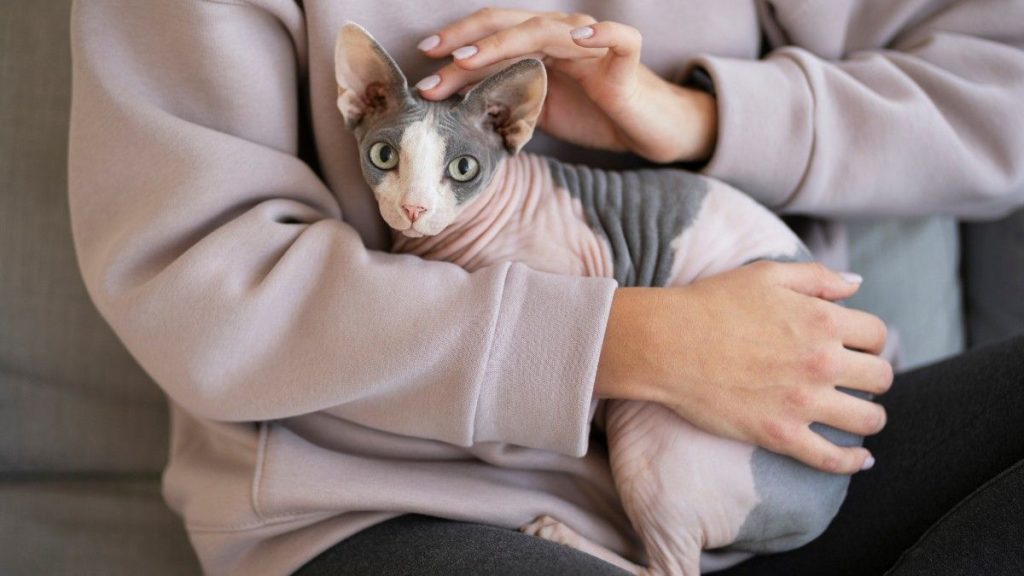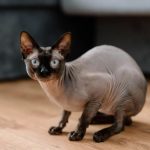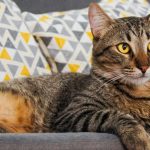If you’re a cat lover with a penchant for unique and elegant feline companions, the Peterbald cat breed might just capture your heart. Known for their sleek, hairless (or nearly hairless) appearance and affectionate nature, Peterbalds are a relatively rare but increasingly popular breed. In this blog post, we’ll dive into everything you need to know about this fascinating breed, from their history and personality to their care requirements and why they make such wonderful pets.
What is a Peterbald Cat?
The Peterbald is a distinctive cat breed that originated in Russia. Breeders recognize Peterbald cats for their slender, graceful bodies and unique coat types, which range from completely hairless to short, velvety fur. Their striking appearance and loving temperament make them a favorite among cat enthusiasts.
Here are some key characteristics of the Peterbald:
- Coat Variations: Peterbalds can have different coat types, including hairless, flocked (a soft, peach-fuzz texture), velour (short, soft fur), brush (curly or wiry fur), and straight-coated.
- Slender Build: They have a lean, muscular body with long legs and a whip-like tail, giving them an elegant and athletic appearance.
- Large Ears and Almond-Shaped Eyes: Their large, pointed ears and expressive almond-shaped eyes add to their exotic look.
- Affectionate Nature: Peterbalds are known for their social and loving personalities, often forming strong bonds with their human families.
History of Peterbald Cat Breed
The Peterbald is a relatively new breed, with its origins tracing back to the 1990s in St. Petersburg, Russia. Here’s a brief overview of their history:
- Origins: The breed was created by crossing a hairless Donskoy (Don Sphynx) cat with an Oriental Shorthair. This combination resulted in a cat with the hairless gene and the sleek, elegant body of the Oriental Shorthair.
- Breed Development: The first Peterbald kittens were born in 1994, and the breed was officially recognized by The International Cat Association (TICA) in 1997.
- Global Popularity: While still relatively rare outside of Russia, Peterbalds have been gaining popularity worldwide due to their unique appearance and charming personalities.
Personality and Temperament
Peterbald cats are as delightful in personality as they are in appearance. They are known for being affectionate, social, and highly intelligent.
- People-Oriented: Peterbalds thrive on human interaction and love being involved in their family’s daily activities. They are often described as “velcro cats” because they like to stick close to their humans.
- Playful and Curious: These cats are highly active and enjoy playing with toys, climbing, and exploring their surroundings. Their intelligence makes them quick learners, and they can even be taught tricks.
- Affectionate and Cuddly: Peterbalds are known for their love of cuddling. They enjoy curling up in laps, sleeping under the covers, and seeking out warm spots in the house.
- Good with Other Pets: Peterbalds are generally sociable and get along well with other cats and even dogs, making them a great addition to multi-pet households.
Caring for a Peterbald Cat
While Peterbalds are relatively low-maintenance in terms of grooming, they do have some specific care needs due to their unique coat types and active nature.
Skin and Coat Care
- Bathing: Hairless or nearly hairless Peterbalds may require regular baths (every 1-2 weeks) to remove oil buildup on their skin. Use a gentle, pet-safe shampoo.
- Moisturizing: Some Peterbalds may need moisturizing to prevent dry skin. Consult your vet for recommendations on pet-safe lotions.
- Sun Protection: Like other hairless breeds, Peterbalds are prone to sunburn. Keep them indoors or provide shade and pet-safe sunscreen if they go outside.
Diet and Nutrition
- High-Quality Diet: Peterbalds are active cats with high metabolisms, so they require a protein-rich, high-quality diet to maintain their energy levels.
- Portion Control: Monitor their food intake to prevent overeating, as they can be prone to obesity if not properly managed.
Health Considerations
- Dental Care: Peterbalds can be prone to dental issues, so regular teeth cleaning is important.
- Regular Vet Check-Ups: Routine vet visits are essential to monitor their overall health, especially for conditions like hypertrophic cardiomyopathy (HCM), which can affect some Peterbalds.
- Temperature Sensitivity: Due to their lack of fur or short coats, Peterbalds are sensitive to cold temperatures. Provide warm bedding and keep your home comfortably warm.
Common Misconceptions About Peterbald Cats
Despite their growing popularity, there are still some misconceptions about Peterbald cats. Let’s clear up a few of the most common myths:
- Myth 1: Peterbalds Are Completely Hairless
While some Peterbalds are hairless, others can have a variety of coat types, including flocked, velour, brush, and straight-coated. - Myth 2: Peterbalds Are High-Maintenance
While they do require regular skin care, Peterbalds are not overly demanding. Their affectionate nature makes the extra care worth it for most owners. - Myth 3: Peterbalds Are Fragile
Peterbalds are just as robust as other breeds. With proper care, they can live long, healthy lives.
Is a Peterbald Cat Right for You?
Before bringing a Peterbald into your home, it’s important to consider whether this breed is a good fit for your lifestyle.
- Ideal for Families: Peterbalds are great with children and other pets, making them an excellent choice for families.
- Attention Seekers: If you’re looking for an independent cat that doesn’t require much interaction, the Peterbald may not be the best fit. They thrive on human companionship.
- Indoor Living: Due to their sensitivity to temperature and sunburn, Peterbalds should be kept indoors.
Fun Facts About Peterbald Cats
- Russian Roots: The Peterbald is one of the few cat breeds that originated in Russia, alongside the Donskoy.
- Coat Variety: No two Peterbalds are exactly alike—their coat types can vary widely, even within the same litter.
- Dog-Like Behavior: Peterbalds are often compared to dogs due to their loyalty, sociability, and love of play.
Final Thoughts
The Peterbald cat is a truly unique and captivating breed that combines elegance, intelligence, and affection in one sleek package. Whether you’re drawn to their striking appearance or their loving personality, a Peterbald can make a wonderful addition to your home.
While they do require some special care, their playful and affectionate nature makes them a joy to have as part of the family. If you’re ready for a cat that will shower you with love and keep you entertained with their antics, the Peterbald might just be the perfect match for you.
FAQs About Peterbald Cat Breed
Q1: What makes the Peterbald cat breed unique?
The Peterbald stands out for its hairless or partially hairless coat, elegant build, and affectionate personality.
Q2: Are Peterbald cats completely hairless?
Not always. Some Peterbalds are fully hairless, while others have a fine coat or a velvety texture.
Q3: Are Peterbald cats friendly?
Yes, they are highly social, affectionate, and love human interaction, making them great companions.
Q4: How much does a Peterbald cat cost?
The price typically ranges from $1,500 to $5,000, depending on the breeder and coat type.
Q5: How long do Peterbald cats live?
With proper care, Peterbald cats live 12–15 years on average.
Q6: Do Peterbald cats require special care?
Yes. Hairless Peterbalds need regular skin cleaning to prevent oil buildup, and they must be kept warm due to lack of fur.


